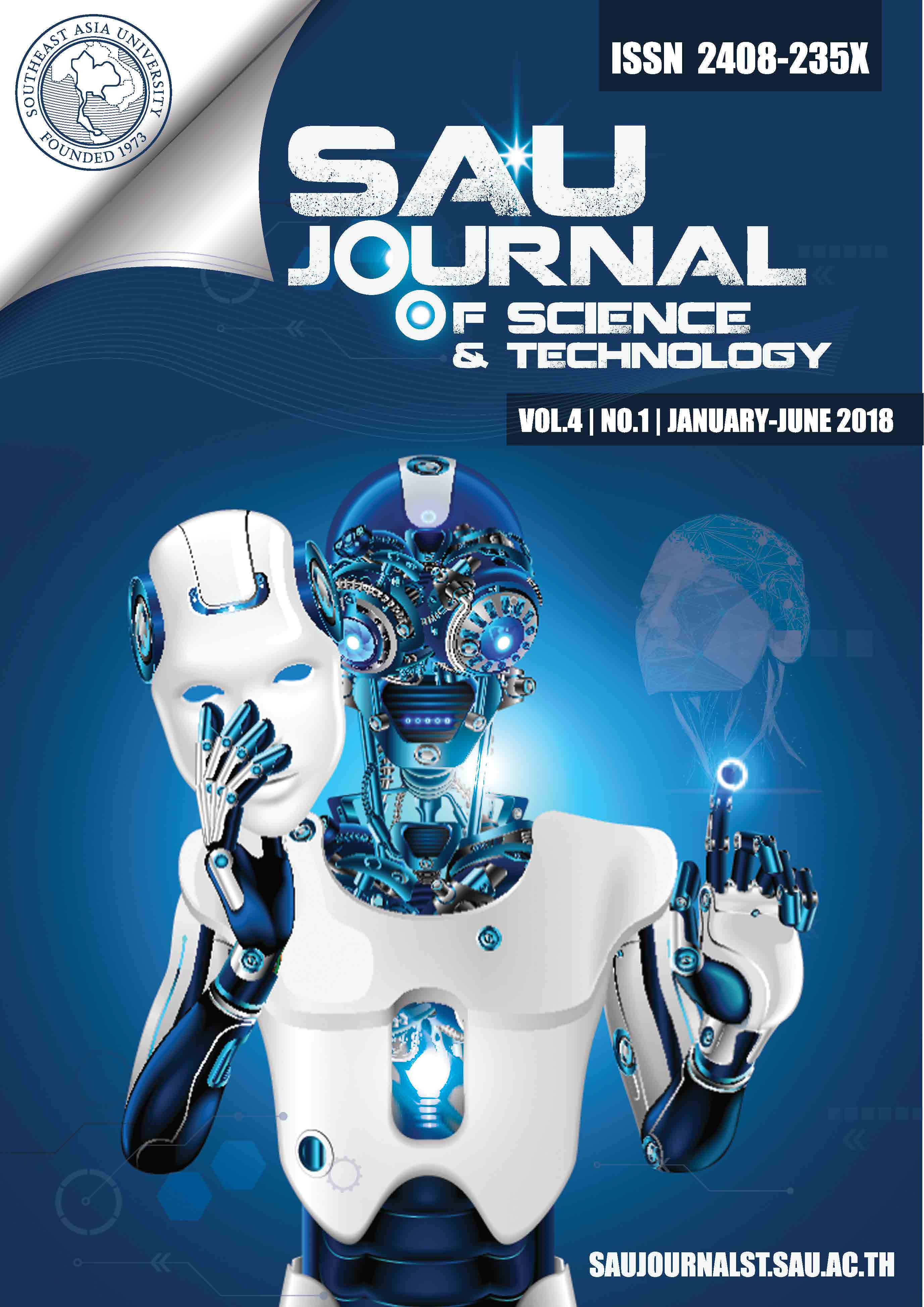The Study of Hydro Cyclone efficiency for Electrocoagulation Waste Water Treatment
Main Article Content
Abstract
The objective of this study was to develop of hydro cyclone efficiency for electrocoagulation waste water treatment. In this study, the hydro cyclone was designed by increasing the size of the diameter to 8 inches, 6 rotation channels. And it was tested for the separation of sediments from the waste water in the function of electricity and flow rate in order to investigate the optimum point, which is the point where the system works best performance. The results of performance tested, with function of DC power supply, flow rate and number of hydro cyclones designed, can be classified into 3 cases: The 1st case: using single hydro cyclone separator, to separate the sediments from the waste water, the best of separation efficiency was 4.5 L/min flow rate. And it was excluded the remaining sediments for 48.28 mg/L from 1,735 mg/L. The effective segregation of sediment was 97.22%. The 2nd case: using double hydro cyclones separator, to separate the sediments from the waste water, the best of separation efficiency was 7.5 L/min flow rate. And it was excluded the remaining sediments for 36.76 mg/L from 1,578 mg/L. The effective segregation of sediments was 97.67%. The 3rd case: using triple hydro cyclones separator, to separate the sediments from the waste water, the best of separation efficiency was 4.5 L/min flow rate. And it was excluded the remaining sediments for 29.08 mg/L from 1,735 mg/L. The effective segregation of sediments was 98.32%. All these results can be well explained using the 3 hydro cyclones separator to separate the sediments from the wastewater, the best of separation efficiency at a rate of 4.5 L/min. And it was excluded the remaining sediments to 98.32%. These optimized hydro cyclones can be used with electrocoagulation wastewater treatment in industrial factory as well.
Article Details
References
[2] Martinez, L. F., Lavin, A. G., Mahamud, M. M. and Bueno, J. L., 2008, WVortex Finder Optimum Length in Hydrocyclone Separation”, Chemical Engineering and Processing : Process Intensification, Vol. 47 No. 2, pp. 192-199.
[3] Bhaskar, K.U., Murthy, Y.R. and Raju, M.R., 2007, “CDF Simulation and Experimental Validation Studies on Hydrocyclone”, Minerals Engineering, Vol. 20 No. 1, pp. 60- 71.
[4] Wang, Z.B. Chu, L.T., Chen, W. M. and Wang, S. G., 2008, “Experimental Investigate of The Motion Trajectory of Solid Particles in Solid Particles The Hydrocyclone by A Lagrange Method”, Chemical Engineering Journal, Vol. 138 No. 1-3, pp. 1-9.
[5] C. Phalakornkule, S. Polgumhang, and W. Tongdaung. (2009). “Performance of an electrocoagulation process in treating direct dye: Batch and Continuous Upflow Processes”, International Journal of Chemical, Molecular, Nuclear, Materials and Metallurgical Engineering Vol:3, No:9, pp.494-499.
[6] B. Phonnipha and J. Natth. (2016) “A Prototype of Industrial Waste Water Treatment using Electrocoagulation”, 5th International Conference on Material Science and Engineering Technology (ICMSET 2016) October 29-31, 2016, Tokyo, Japan.
[7] Arnaud. “Method for Removing Dissolved from Wastewater by Electrocoagulation” United Stat Patent No. US6797179B2, Sep. 28 2004.
[8] B. Phonnipha. (2018). “A Design of Mobile Unit of Electrocoagulation Wastewater Treatment.” Research study report. Southeast Asia University.


